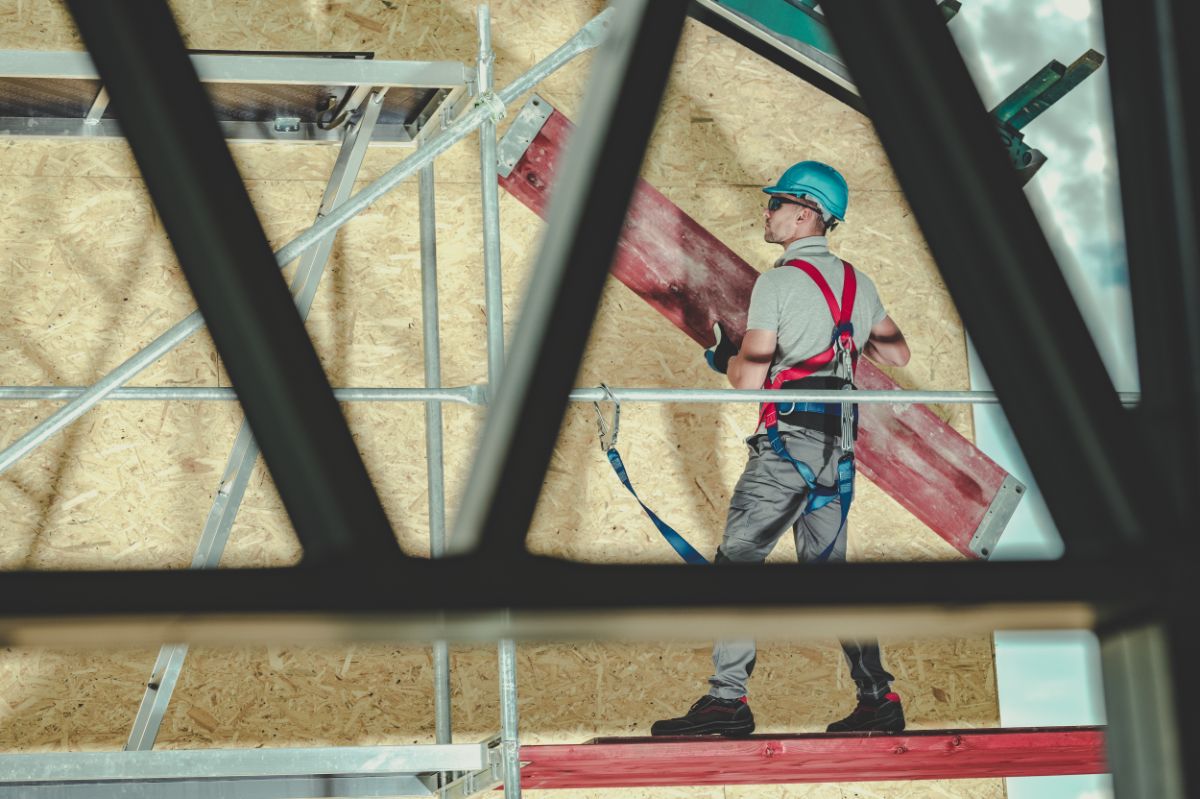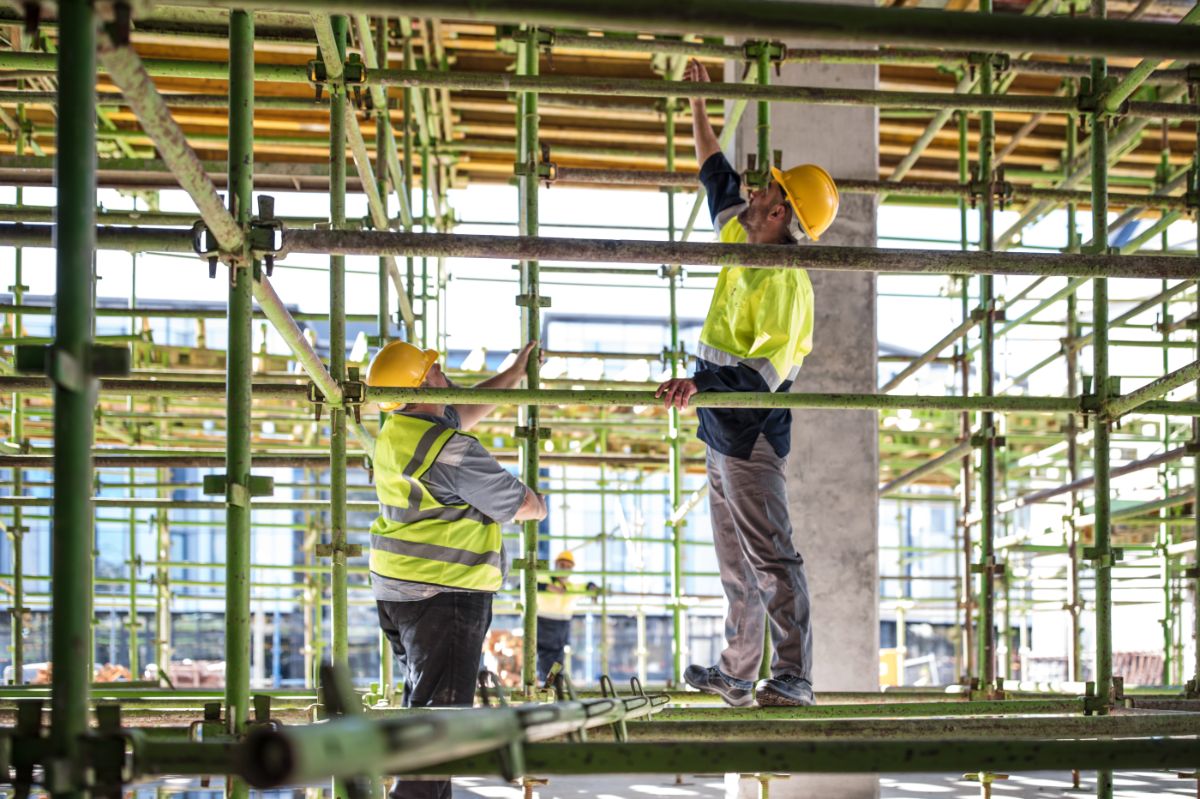
Scaffolding Safety Checklist: 7 Things to Inspect Before Use
What should be on my scaffolding safety checklist?
- Inspect scaffolding integrity
- Inspect scaffolding platforms
- Inspect scaffolding access
- Inspect scaffolding working conditions
- Evaluate fall protection measures
- Evaluate personnel training
- Place appropriate scaffolding tags
A scaffold inspection checklist is one of the most important tools to have on the job site. It provides a step-by-step process to help you identify potential oversights or defects in your scaffolding, which could cause harm or injury if missed or overlooked.
But how do you craft a checklist that helps you efficiently carry out such a critical evaluation for your project? To help you thoroughly evaluate your scaffolding’s quality, stability, and usability, here are seven things to add to your scaffolding safety checklist:
Why is inspecting my scaffolding important?
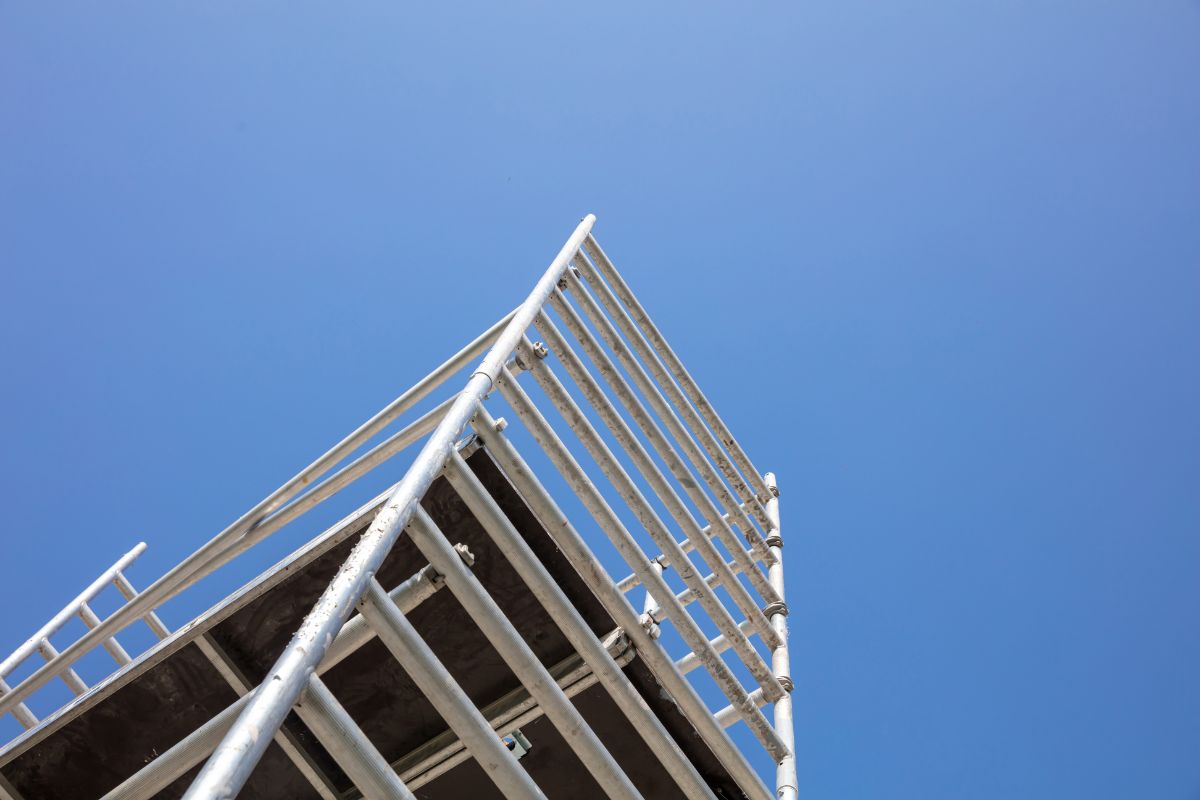
But first, why is this process so important? As we mentioned, inspecting this tool thoroughly is key to keeping you and your workers safe while they use your steel scaffolding systems.
Scaffolding systems, though built to be robust and long-lasting, can eventually collapse due to many factors, such as degradation, instability, or overloading. So, it’s a must to always inspect scaffolding before allowing anyone to use it. This reduces the risk of injury, and potentially death.
What should I do before starting scaffolding safety inspections?
That said, there are a few important tasks for you to complete before starting on your scaffolding safety checklist.
- Power down any electrical lines or power sources near the scaffold. Ensure there are no active sources of energy within 10 feet of the scaffolding.
- Check if the type of scaffolding is suitable for the load, materials, workers, and weather conditions of the job site.
- Inspect the ground that the scaffolding is set on. It should be level, sound, and firm enough to support the structure.
- Inspect the legs and frames of the structure. They should be upright and firmly in place on base plates or mudsills.
From here, you can begin starting your scaffolding safety inspection. Doing these steps before the check will ensure that the structure is safe for trained inspectors to step on and conduct the safety inspection.
Inspect scaffolding integrity
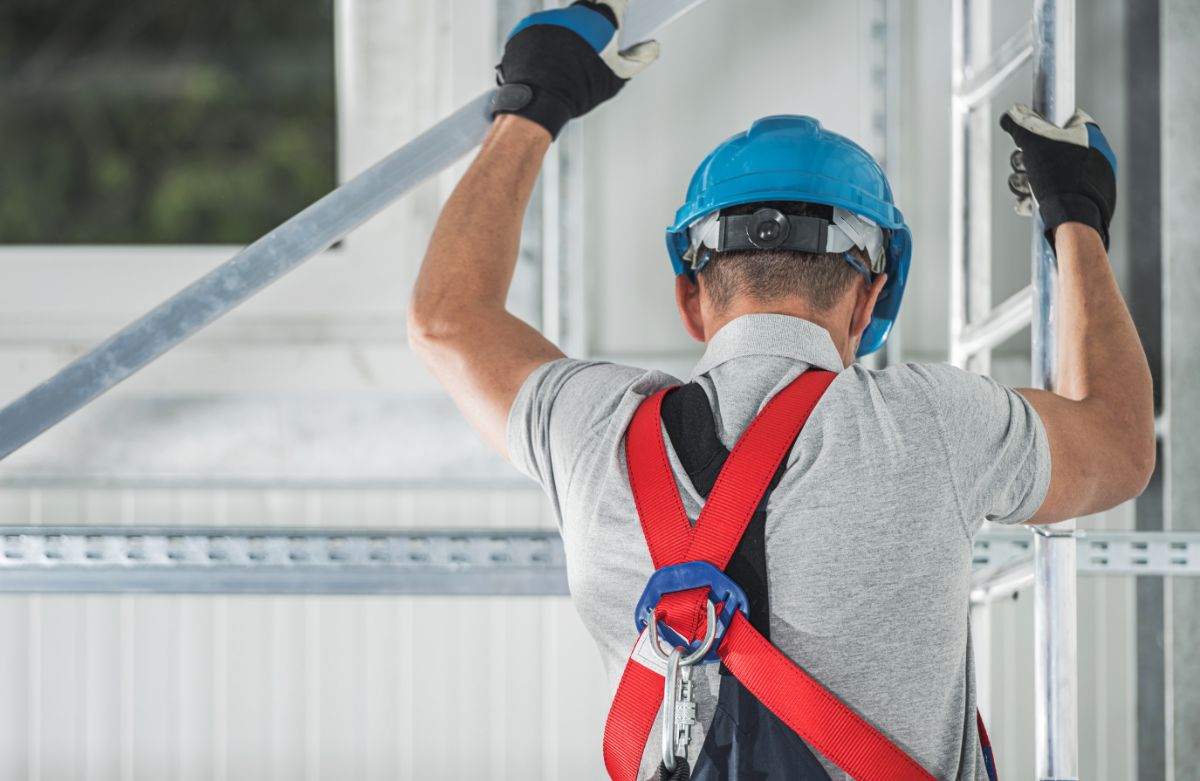
First, the integrity of the structure should be inspected. This means that the design of the scaffold is sound, and was provided by a licensed professional engineer who takes care to meet the safety limits recommended by OSHA.
The scaffold must be erected firmly on the baseplates or mudsills it is set on, and capable of carrying the indicated rated load. Scaffolding should also be tied off and secure, and any braces, uprights, and support components must be firmly set into the structure.
No barrels, boxes, bricks, blocks, or other supporting material should be used to support any platform or section of the scaffold. Likewise, the structure itself should not be similar to a lean-to. It must stand erect on its own.
Inspect scaffolding platforms
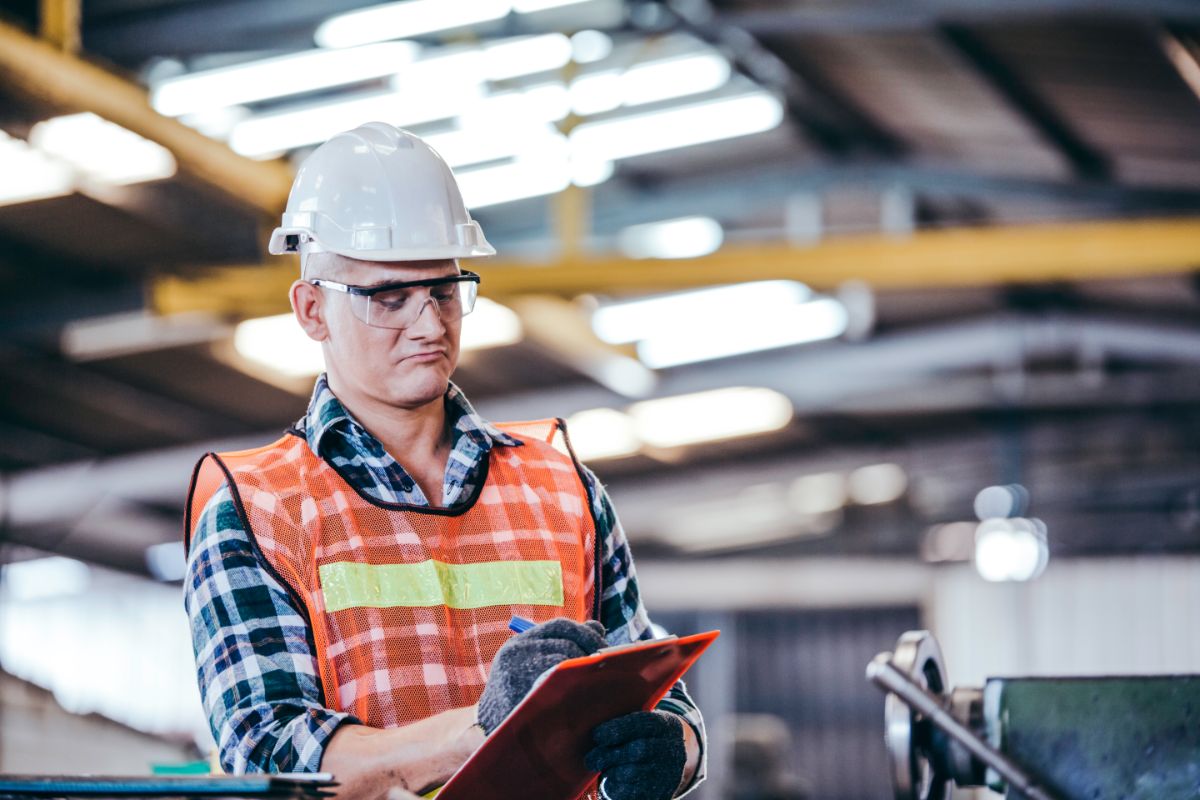
Next, inspect the platforms. Any material used to create the platforms must be stress-grade lumber or otherwise made from reinforced metals, such as steel pipes. Each platform must not extend more than 10 feet for light use, 8 feet for medium use, and 6 feet for heavy use.
Additionally, each platform must be supported by poles, legs, and uprights. These supporting structures must be plumb and securely braced against the rest of the scaffolding to prevent swaying or unsteady platforms.
Inspect scaffolding access
The next step is to confirm if all access points are safe to use and clear. No access should be blocked by any material or structure. Any ladders, stairways, or ramps connected to them should be placed in such a way that avoids making the scaffolding unstable.
And, any ladder used to provide access to the scaffolding structure should be securely attached to the scaffold itself, rather than another structure or on the ground. Each ladder should also rise 3 feet above the platform at a minimum.
Inspect scaffolding working conditions
The working conditions on the scaffolding itself should also be inspected. There should be some kind of overhead protection on the scaffolding to prevent accidents.
Any tripping hazards, such as loose wire or rope, misplaced tools, material debris, and the like should be removed. Any puddles or wet spots should be cleaned up immediately. In the event of rain or high winds, no work should be done on the scaffolding.
Evaluate fall protection measures
Fall protection measures are a must for any scaffolding structure, as is the rule for any construction personnel working in structures six feet and higher.
Fall protection measures include things like guard rails and personal fall arrests for construction personnel. Though, the appropriate fall protection system depends on several factors, such as the type of scaffolding being used and how tall the structure is.
Evaluate personnel training

All construction personnel who need to use the scaffolding structure should be adequately trained to do so.
This training should be conducted by a qualified professional and should include best practices on identifying, avoiding, and dealing with fall hazards, falling object hazards, and electrical hazards. It should also include modules on the proper use of the scaffold, and handling of materials while on the structure.
Place appropriate scaffolding tags
Scaffolding tags are how construction site personnel communicate potential problems with the structure. They serve as warning devices for all personnel. Proper use and placement of tags can do a lot for preventing accidents or injuries.
Green tags indicate that the scaffold section is safe for use. Yellow tags indicate sections that have been modified or repaired to meet working conditions, and could potentially present a hazard as a result. Red tags indicate sections that are unsafe for use and require immediate replacement or repair.
Each tag should be placed in the scaffolding access point, and securely attached to the scaffolding in a way that it can withstand environmental conditions. The tag and its written details should be easily noticeable and legible and include information regarding the last inspection and any modifications the scaffolding has undergone.
Key Takeaway
Perform better inspections of your scaffolding with our scaffolding safety checklist. This should help cover all the basics of scaffold safety evaluations, and ensure that it is safe for your construction personnel to use.
If you find you need replacements or repairs for your scaffolding structures, contact Supreme Pipe today. As the top supplier of steel pipes in the Philippines, we have just what you need to remake your scaffolding — better than ever!
